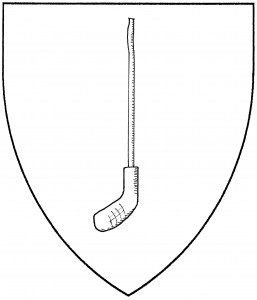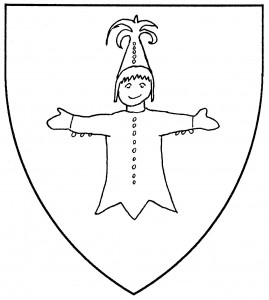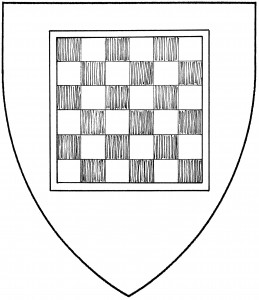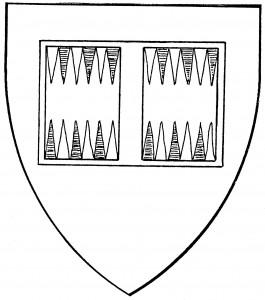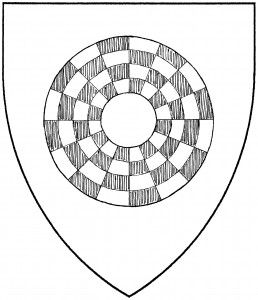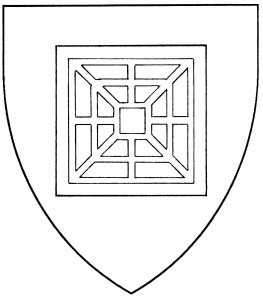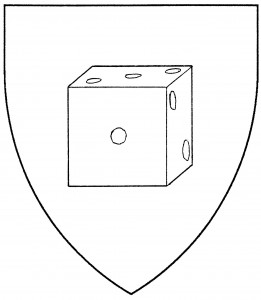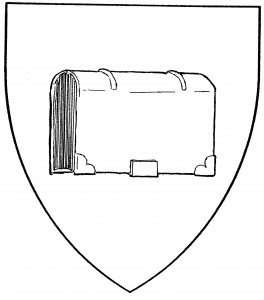Of the six types of pieces used in the game of chess, five are found in Society heraldry: the chess rook, the chess knight, the chess king, the chess bishop, and the chess pawn. Of these, only the chess rook and chess knight have been found in period armory. They are thus the only pieces which, having a standardized form, can be assured to have heraldic difference from the others.
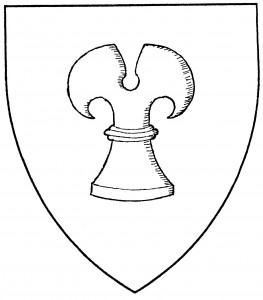
Chess rook (Period)
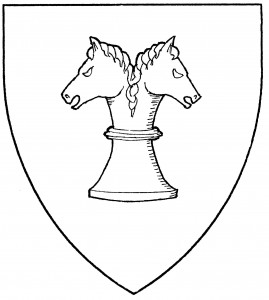
Chess knight (Period)
The chess rook was common in medieval heraldry, found as early as c.1285 in the arms of FitzSimon [ANA2 234]; it was a frequent source of cants, as with Rockwood (Rokewode, Rookwood), 1371 [DBA2 260]. The chess knight was most frequent in German heraldry, as in the arms of zu Tratzperg, mid-16th C [NW 69], or of von Hertzheim, 1605 [Siebmacher 95]. The chess knight has two heads by default.

Chess king (Accepted)
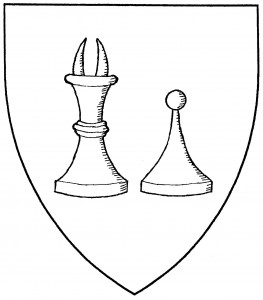
Chess bishop (Accepted); chess pawn (Accepted)
The other three pieces, the chess king, bishop and pawn, are Society innovations; their forms were taken from Publicius’ Ars oratoria, 1482. In point of fact, any period depiction of a chess piece is acceptable, so long as the piece is identifiable; the most common modern stylization, the Staunton set, is post-period and may not be used.
There is no restriction on who may bear chess pieces: one need not be a member of the Chivalry to bear a chess knight, for instance.
See also zule.
Alberic Reed bears: Argent, a chess king within a bordure rayonny gules.
Margot Becker bears: Azure, three chess rooks argent.
Eoin MacGriogair bears: Argent, a chess knight sable crined gules.
Knut Gunnarson of Småland bears: Per fess argent and sable, a pale counterchanged, three chess pawns sable.
Godefroy Lévêque bears: Or, a chess bishop and a chief gules.
